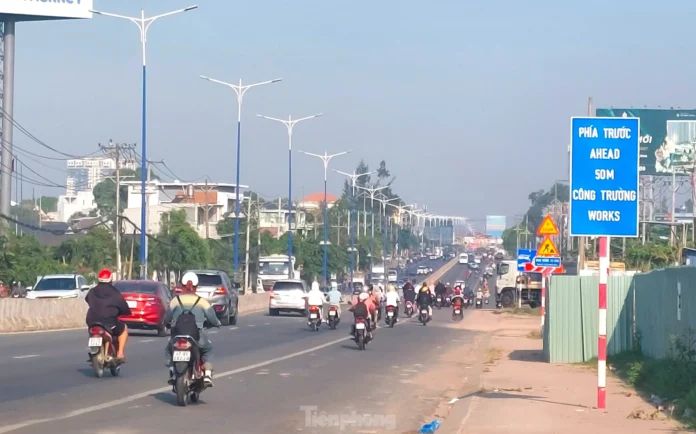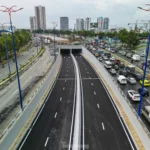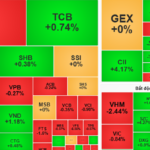On June 27, information from the Binh Duong Provincial People’s Council revealed that the province has just passed a resolution to adjust the investment policy for the BOT project to upgrade and expand the existing National Highway 13.
Previously, Binh Duong had spent nearly VND 1,400 billion to upgrade National Highway 13, a nearly 13-km stretch from the gateway bordering Ho Chi Minh City to the beginning of Thu Dau Mot City. However, as Binh Duong is set to merge with Ho Chi Minh City, the traffic pressure on this route will be immense. To ensure uniformity along the entire route, Binh Duong Province has agreed to allocate additional funds to expand the project’s scope.
According to a representative of the Binh Duong Provincial People’s Council, the improvement and expansion of National Highway 13 will continue to create a “technical framework” for socio-economic development. It will not only alleviate traffic congestion along the route but also prepare for long-term urban development plans by adopting solutions such as lane expansion and shaping the transportation artery. This will further attract investment for the new development phase.
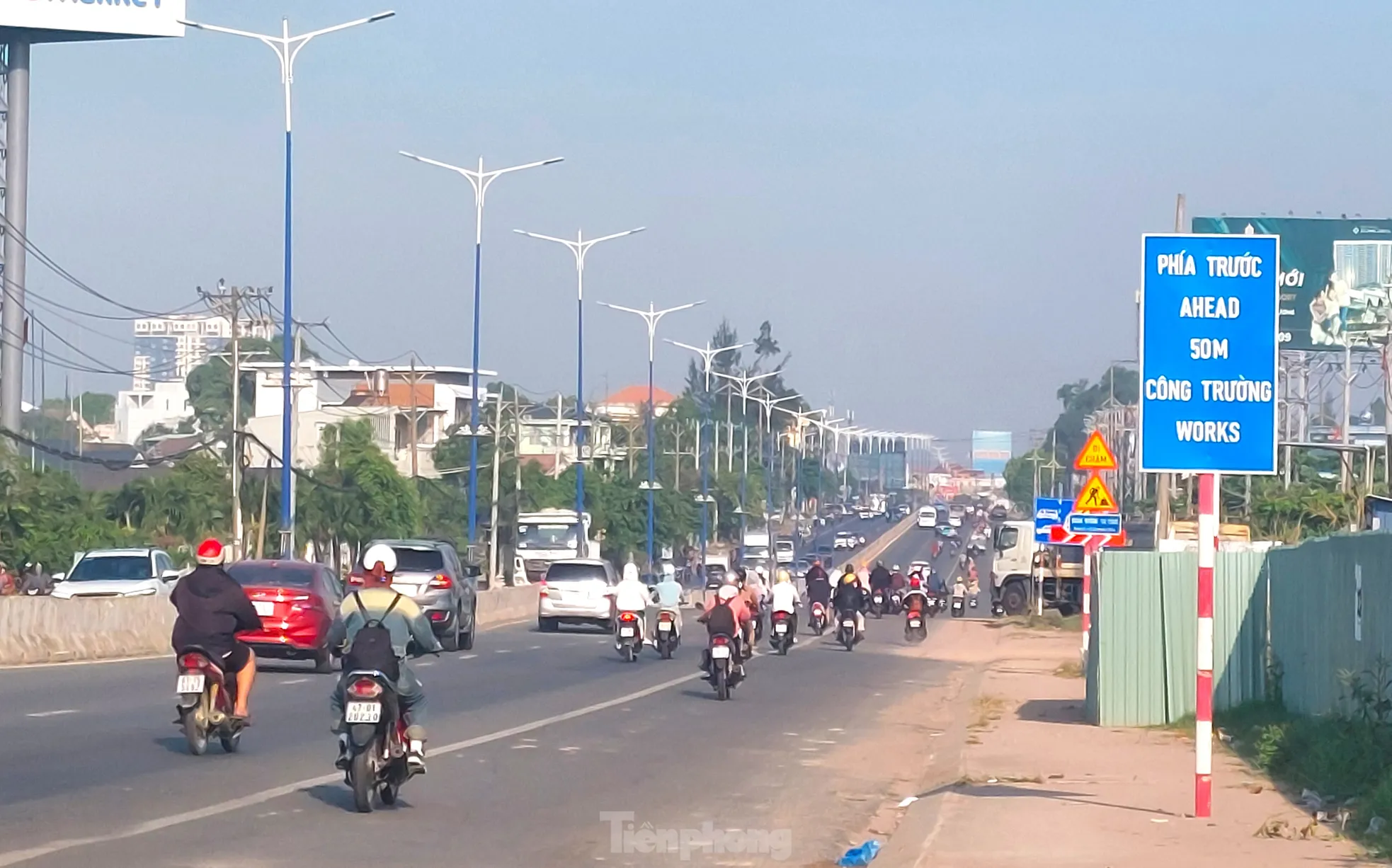
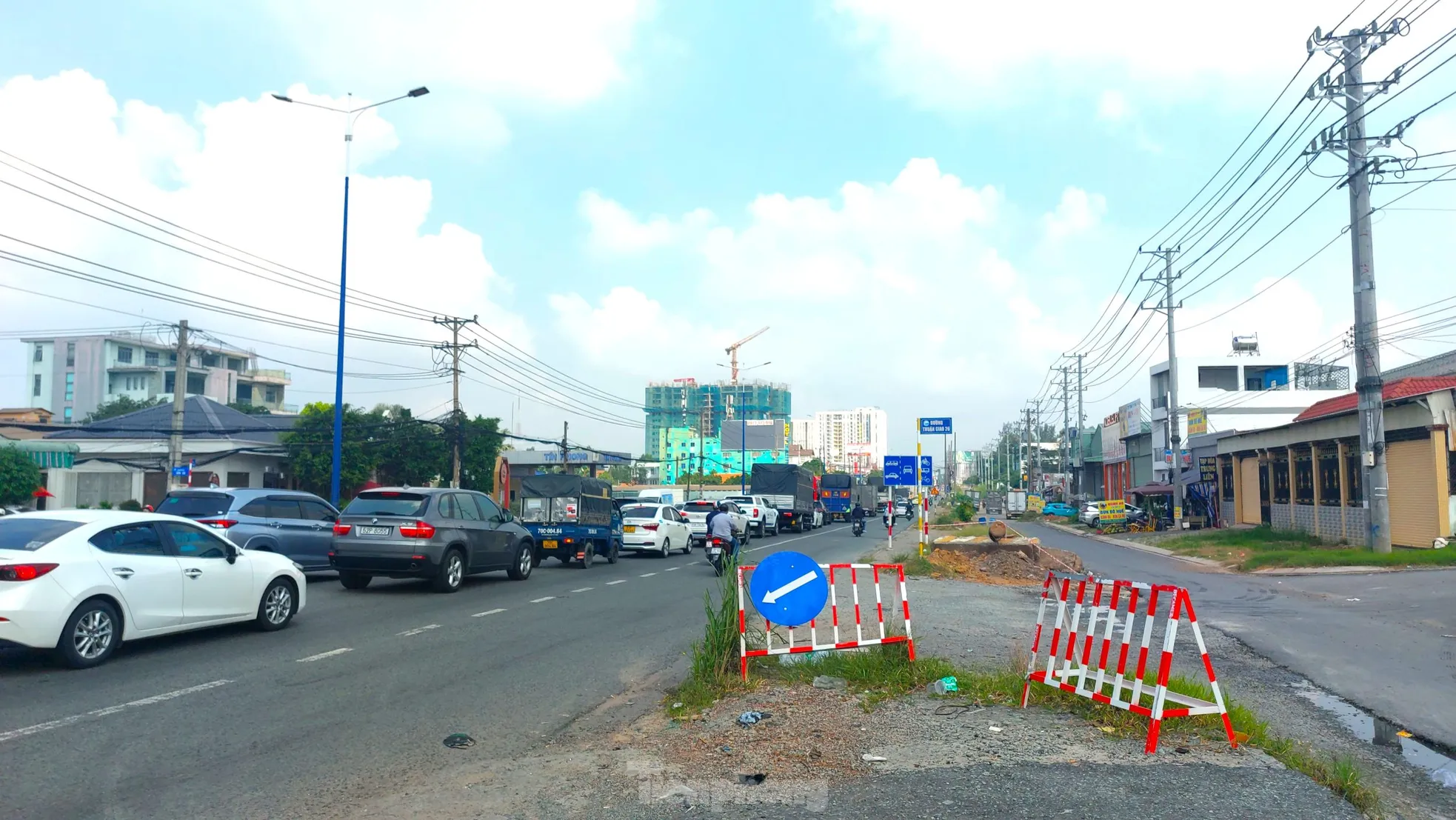
Binh Duong upgrades National Highway 13 from 6 to 8 lanes
The project to improve and expand National Highway 13 from Vinh Phu Gate (in Thu An District bordering Ho Chi Minh City) to the intersection with Le Hong Phong Street (in Thu Dau Mot City) will add two lanes on the right side (resulting in a total of 8 lanes after expansion), along with investments in sidewalks, greenery, and a synchronized drainage system.
Along the route, the province will construct overpasses at the Binh Hoa and Huu Nghi intersections, as well as a 4-lane overpass at the Hoa Lan intersection. Other intersections will be studied for expansion to enhance traffic flow.
The project will also invest in a combined drainage and lighting system along both sides of the road, from Ben Cat Town to Bau Bang District (at Tham Rot Bridge).
The total investment has been adjusted to increase by approximately VND 6,255 billion, of which nearly VND 4,100 billion in state capital accounts for 65.4% of the adjusted total investment. This state capital will be used for site clearance. The remaining investment of nearly VND 2,200 billion, accounting for 34.6% of the adjusted total investment, will be mobilized by the investor for construction.
Regarding the National Highway 13 section in Ho Chi Minh City, the city’s Department of Construction has just approved the plan for selecting an investor for the project to upgrade and expand National Highway 13 (Component 2, from Binh Trieu Bridge to the border of Binh Duong Province) under a BOT contract, at the stage of preparing the pre-feasibility study report.
National Highway 13, spanning nearly 6 km in Thu Duc City, from Binh Trieu Bridge to Vinh Binh Bridge (bordering Binh Duong Province), will be expanded to 60 m with 10 lanes. The project includes the construction of an elevated road (flyover) that is 3.2 km long, with 4 lanes, and a design speed of up to 80 km/h, from Binh Trieu Intersection to Binh Phuoc Intersection.
Below the flyover, there will be two 3-lane parallel roads on each side, with a maximum speed of 60 km/h, serving mixed traffic. Additionally, to alleviate traffic congestion at major intersections, the project will construct two-way tunnels at Binh Loi and Binh Phuoc intersections.
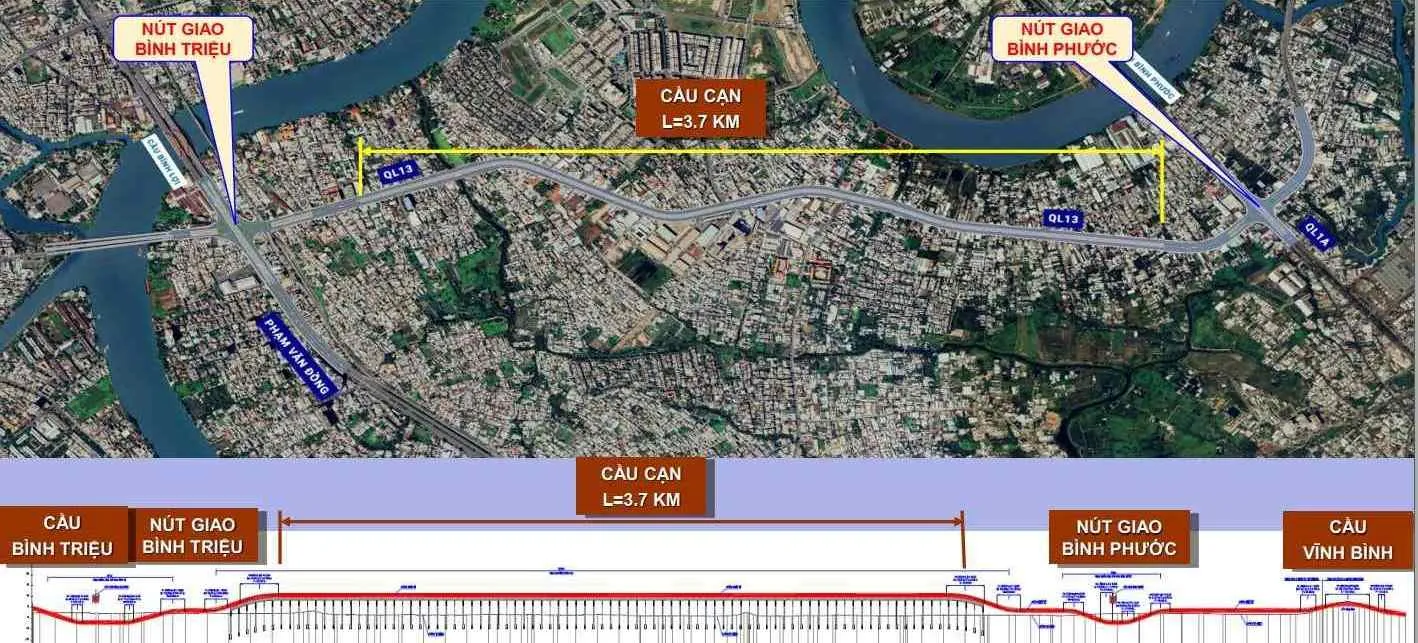
An elevated road will be constructed along National Highway 13 in Ho Chi Minh City, spanning 3.2 km from Binh Trieu Intersection to National Highway 1A.
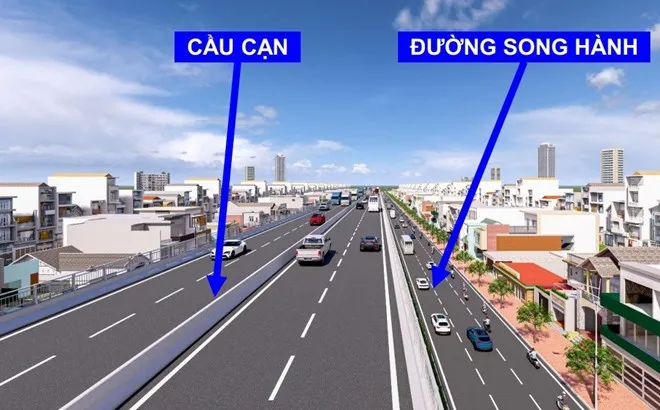
Perspective of the flyover on National Highway 13 in Ho Chi Minh City
The new infrastructure system will effectively distribute traffic flow, reduce congestion, and increase travel speed along the entire route. The total investment for the Ho Chi Minh City section of the project is estimated at VND 20,900 billion. Of this, the state budget will allocate approximately VND 14,619 billion for compensation, support for resettlement, and site clearance. The remaining funds will be mobilized by the investor through the BOT contract.
The project is expected to occupy approximately 39.54 hectares of land, affecting 1,091 households living along the route. Among them, 238 households will need to be completely relocated, while the remaining 853 households will be partially affected.
According to the plan, site clearance will be carried out from the third quarter of 2025 to the third quarter of 2026. Construction is expected to commence in the third quarter of 2026, with the entire project targeted for completion by 2028.
The improvement and expansion of National Highway 13 is of great importance, especially with the merger of Binh Duong into Ho Chi Minh City. It will enhance transportation capacity and mobility between the two localities.
According to plans, the new Ho Chi Minh City will arrange shuttle buses to pick up and drop off officials from Binh Duong Province starting July 1. There will be six trips back and forth per day using high-quality buses equipped with WiFi and multi-device connection capabilities, providing Internet access for users and supporting the onboard control system. The earliest trip is expected to depart from the Binh Duong Provincial Administrative Center at 5:30 AM, while the last trip will leave Ho Chi Minh City for Binh Duong at 5:25 PM.
The pickup points in Binh Duong include the Binh Duong Provincial Administrative Center, Phu My Bus Station, and Thu Dau Mot Bus Station. In Ho Chi Minh City, the bus will pick up passengers at the Saigon Bus Station, Le Duan Street bus stop, Le Thanh Ton Street bus stop, Hai Ba Trung Street bus stop, Ben Thanh Metro Station, and Le Loi Street bus stop.
As National Highway 13 is the main transportation artery between Ho Chi Minh City and Binh Duong Province, both localities are expediting the investment process to upgrade and expand this route.
“Q2 Earnings Call: Projected Profit Doubles That of Last Year”
The 2025 Annual General Meeting of Thac Mo Hydro Power Joint Stock Company (HOSE: TMP) held on the afternoon of June 27th, approved several key performance indicators and plans for the year. In addition, Chairman of the Board of Directors, Huynh Van Khanh, revealed an impressive estimated result for the second quarter, attributing the success to favorable weather conditions in the Southeast region.
“Vingroup and Thaco Pledge to Transform Vietnam’s Metropolis into a ‘Mega International City’, Surpassing Shanghai in Scale.”
Once the merger is complete, this Vietnamese city aspires to rank among the top 100 most liveable cities worldwide.

























